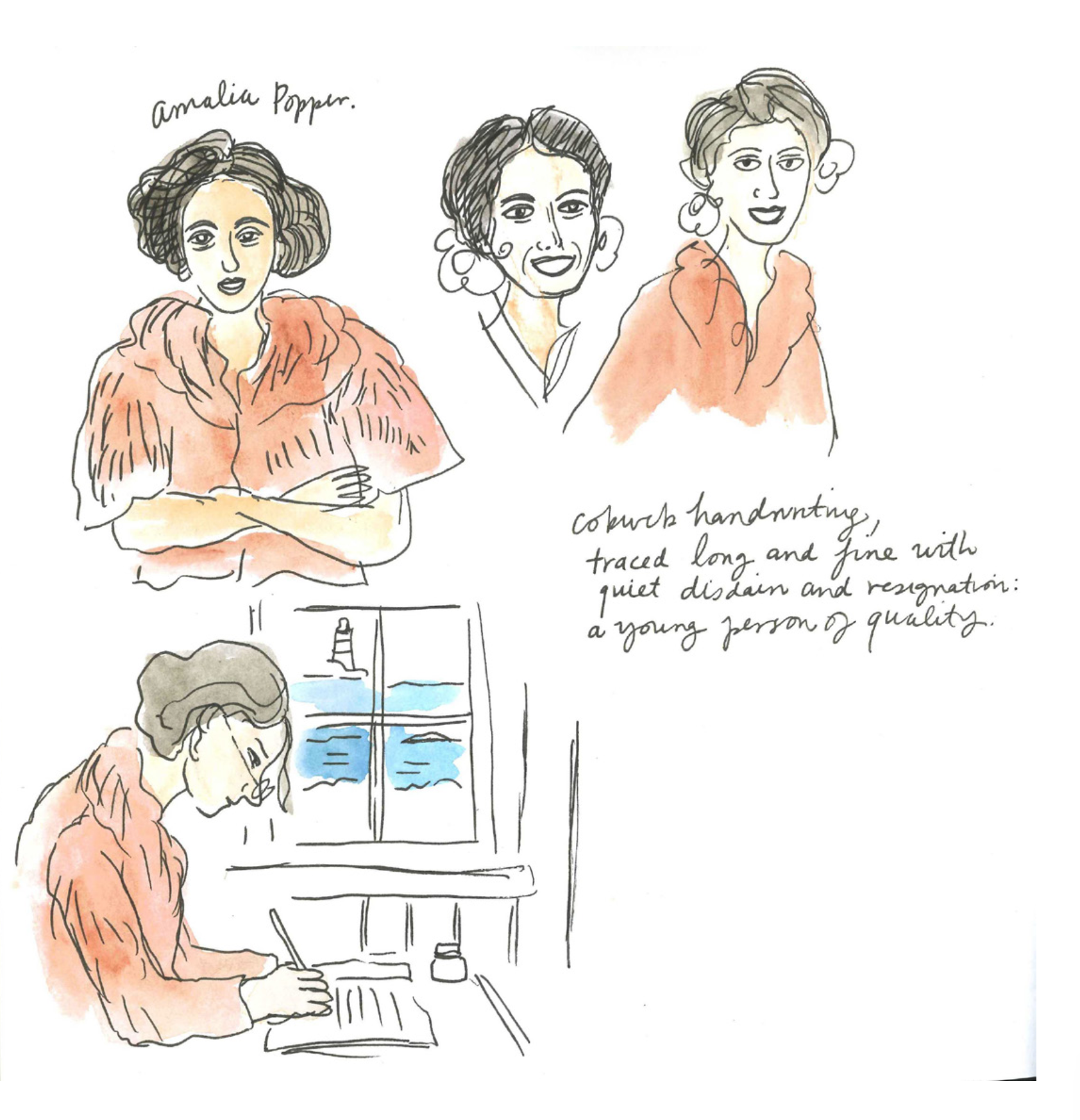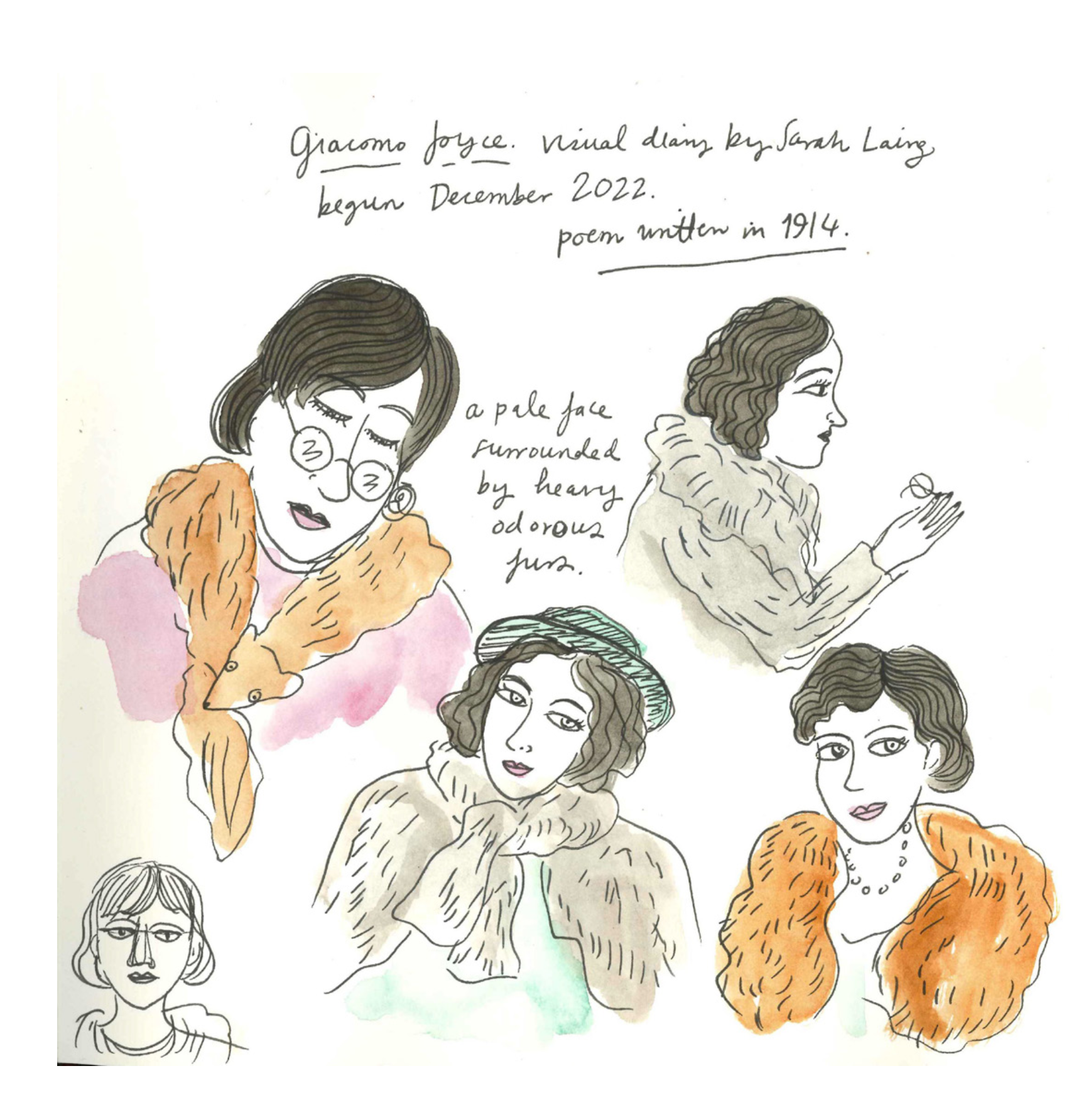One of my primary interests concerning ‘Giacomo Joyce’ is dissecting and critiquing Joyce’s representation of his subject. In ‘Giacomo Joyce’, the female body is used as a vessel through which the author imprints his own meaning, stages his own anxieties, and asserts power over. Joyce achieves this expression of power through writing and re-writing his subject, shaping her into the fantasies of his mind’s eye.
Joyce, Giacomo Joyce, page 1
JP
ED: Our first impression of Joyce’s subject you draw with black ink, which feels sketch-like and experimental – similar to how I imagine Joyce felt when starting this document. What is the effect that is intended here?
JP: I like your connection between the sketch-like germ of an idea in Joyce’s head at the beginning of the project and the drawing style on the first page. I guess one could also say that it evokes the sketch-like, very partial first impression that he has of his student upon first meeting her. The style was also directly inspired by the evocation of the student’s “cobweb handwriting, traced long and fine.” I was trying to get at something delicate and graceful, and somewhat wrapped in around itself.
SL
ED: What considerations did you face in portraying Joyce’s subject – a woman who we see only portrayed through the male narrator’s lens? How did you work to understand (and then to illustrate) the personhood of this young woman, from the text you were given, and what decisions were made around how you might portray her?
SL: I did a little bit of research and saw that she was a real person. I liked the idea that she was real, that there was an actual subject that Joyce was riffing on.
I gathered from my research that she was young, and she was from a Jewish family. I also gathered it was written in the 1910s, so I researched a little bit about the fashions of the time so that I could get the clothes and hairstyles right.

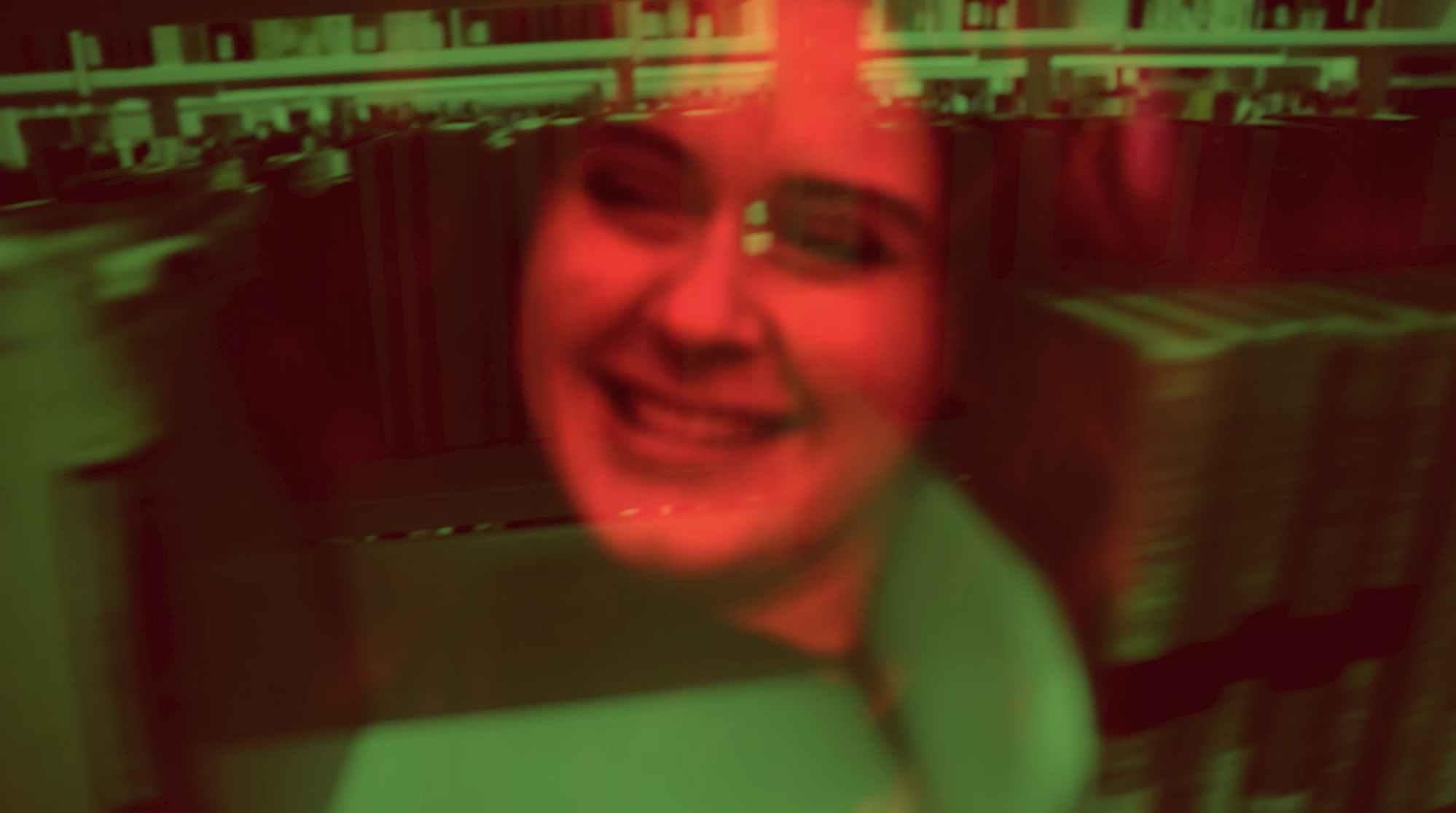
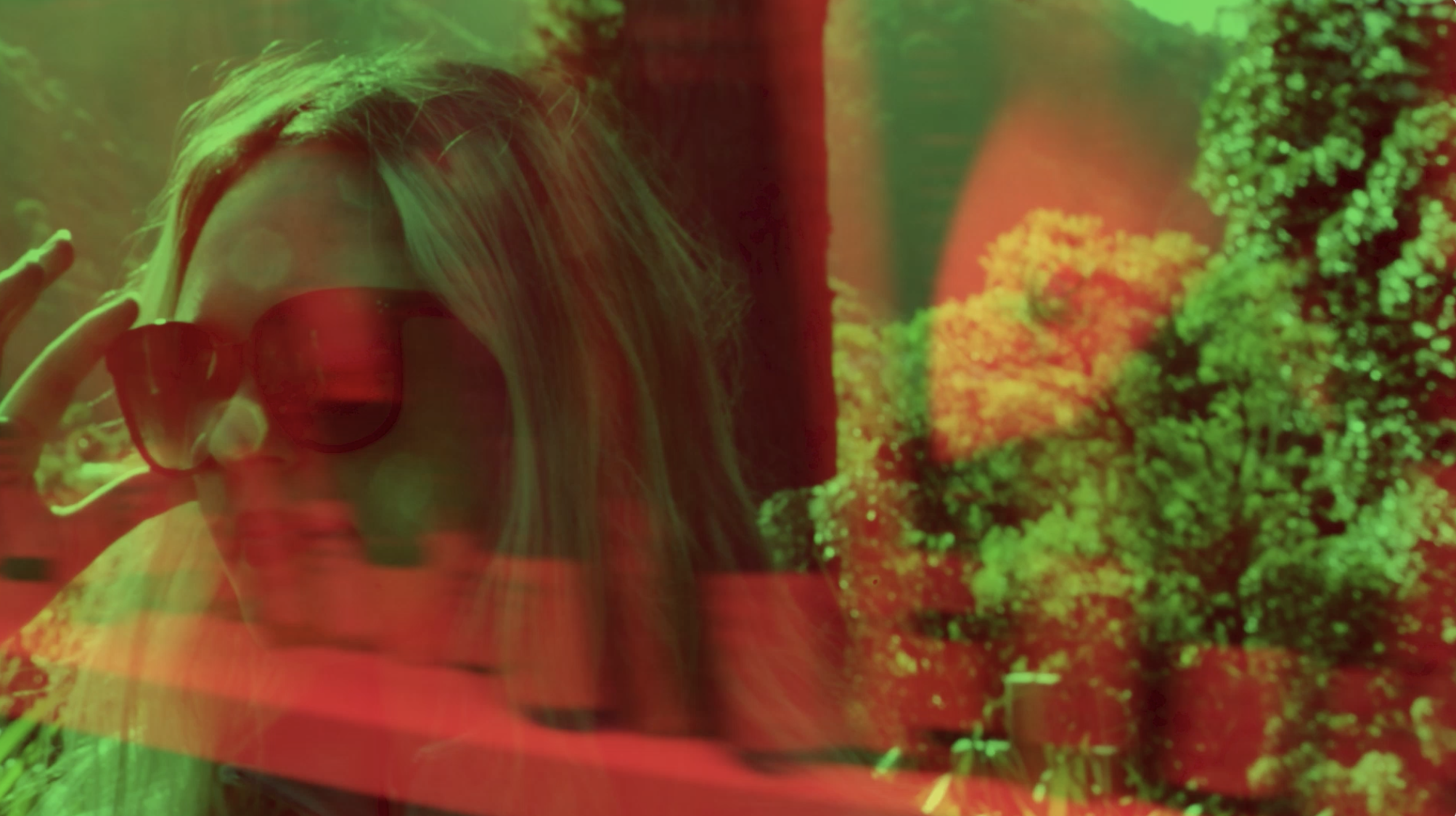
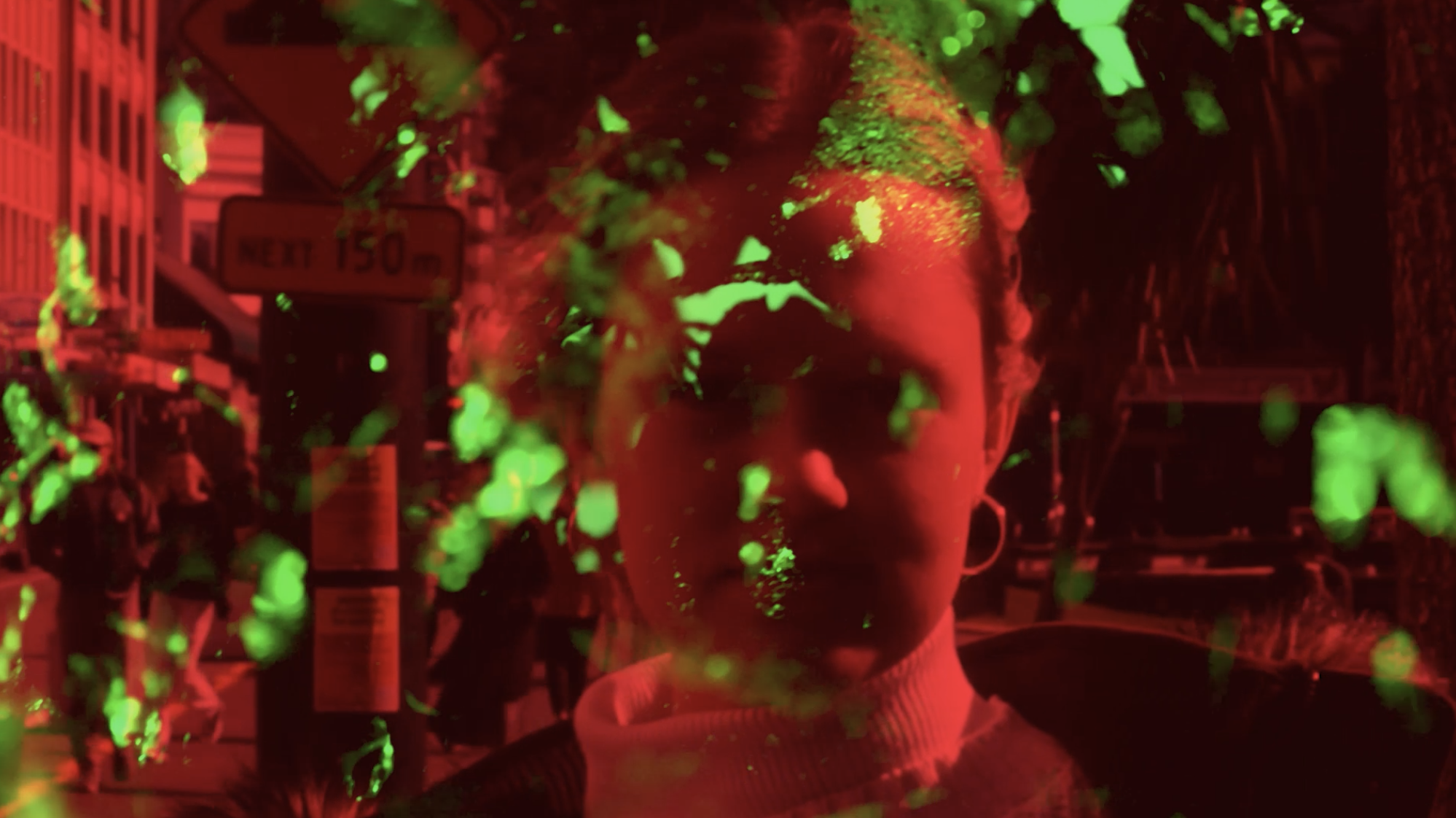
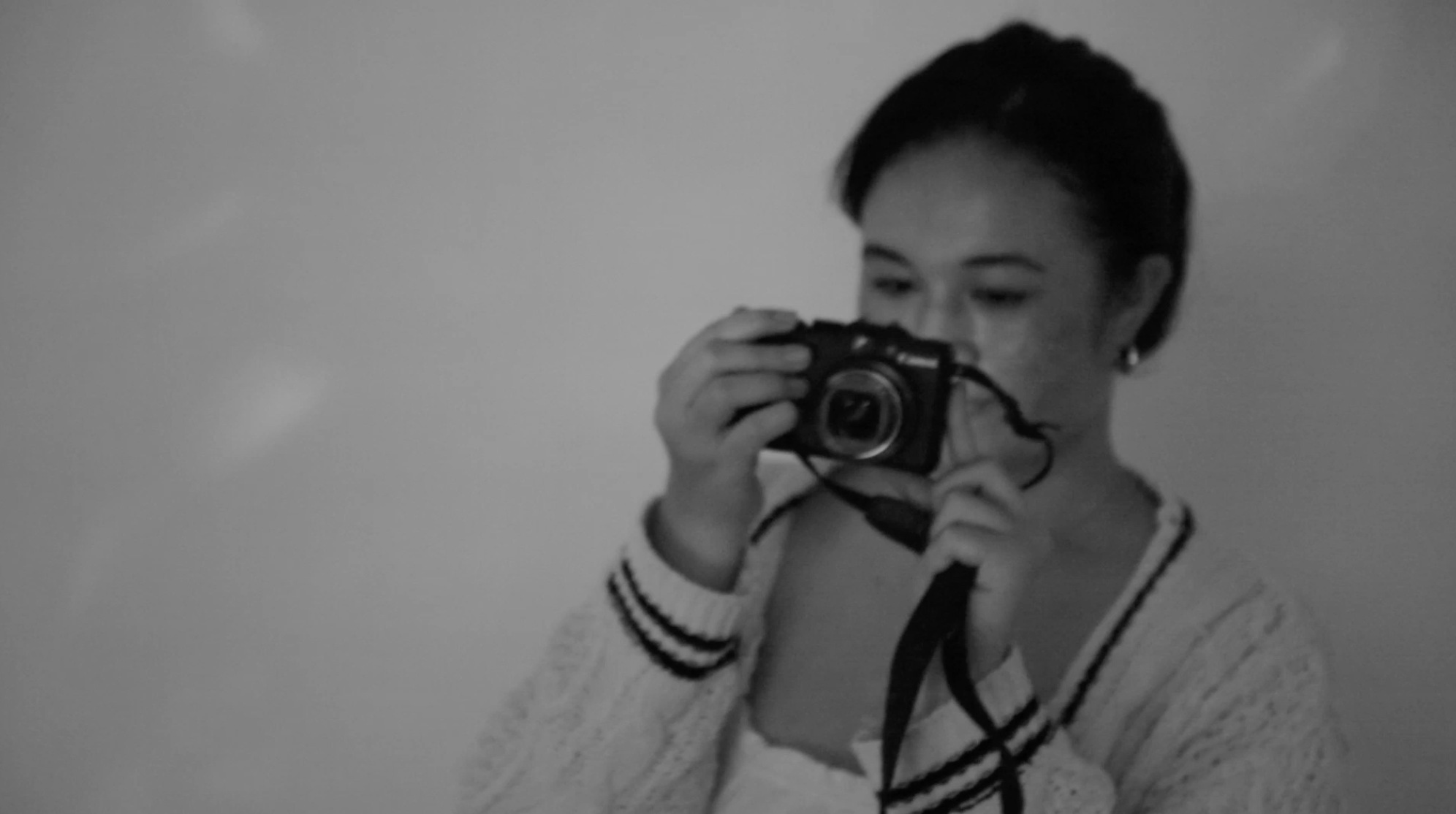
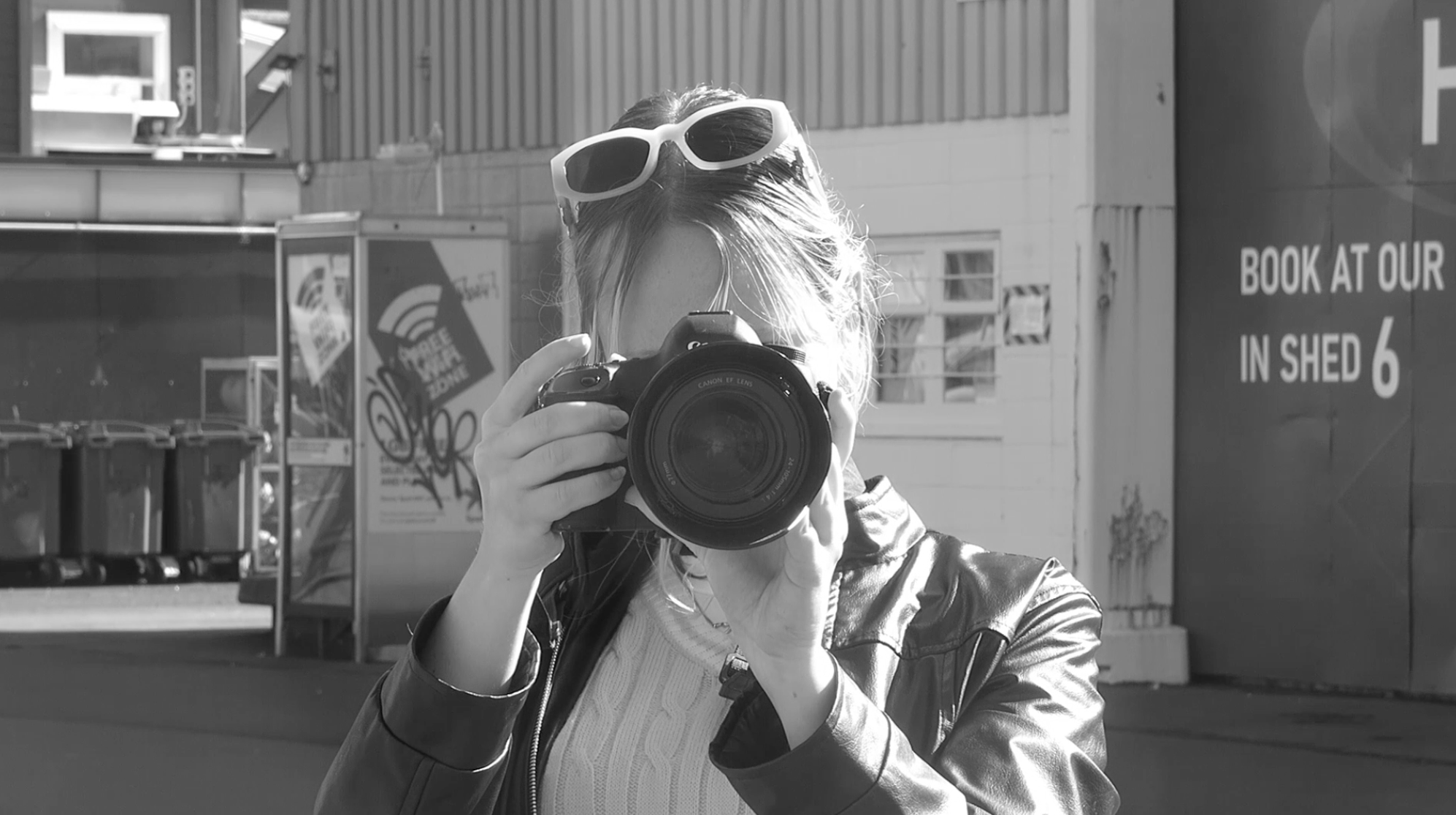
TST
ED: There are multiple actresses in your film. Why did you choose multiple female subjects, instead of the singular subject detailed in Giacomo Joyce?
TST: The fact that I chose multiple women rather than one is connected to the idea that the desire is manifold - it's not a true kind of love, but a carnal lust. I’m emphasising that there is no single subject here, there's a multiplicity that you're engaging with, and that seems to come to life in the different subjects. I thought that was interesting mirrored against the single voice.
❦
It all begins with an idea —
Interpretation entails intervention: subjectivity and multiplicity expose the limits of the objective and the univocal as soon as evolution is considered.


